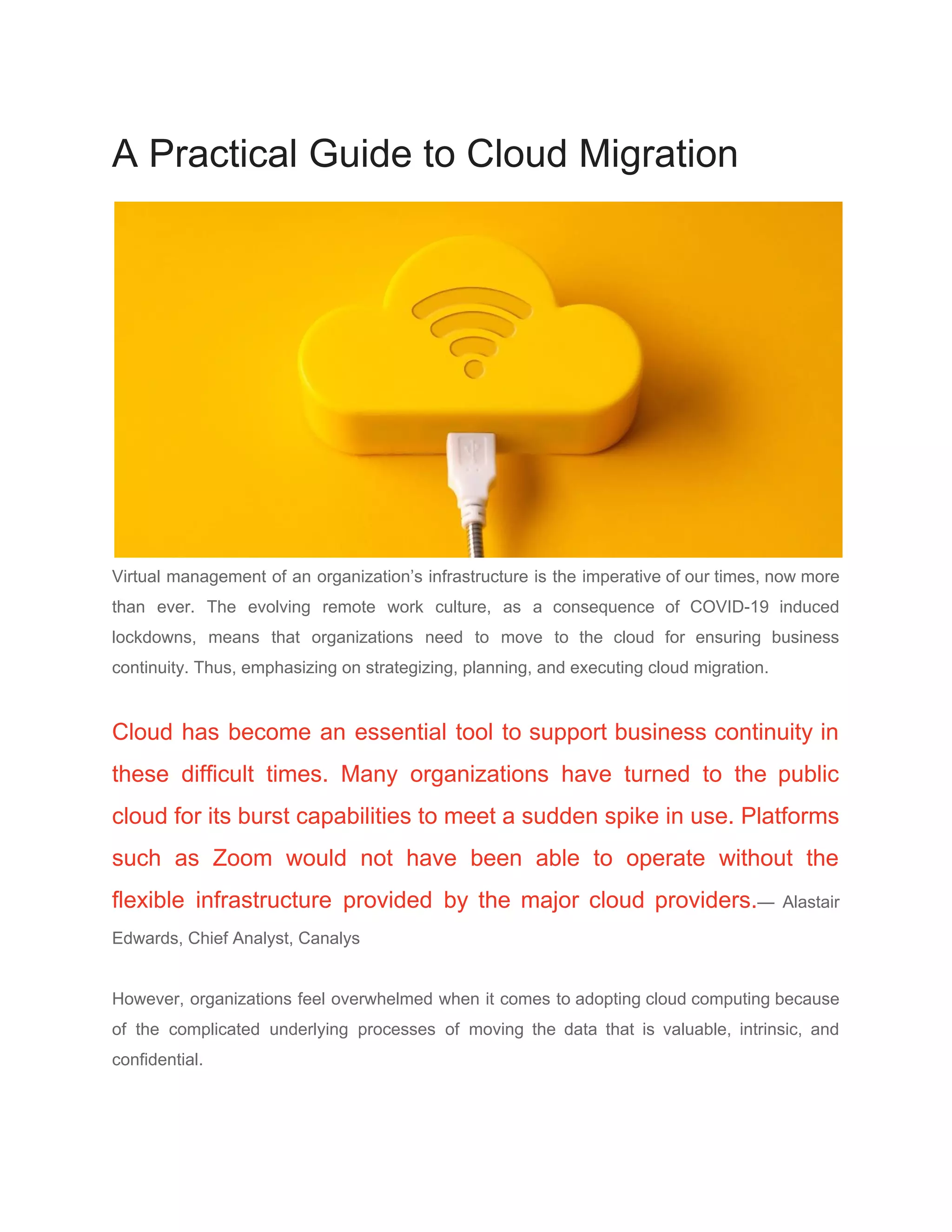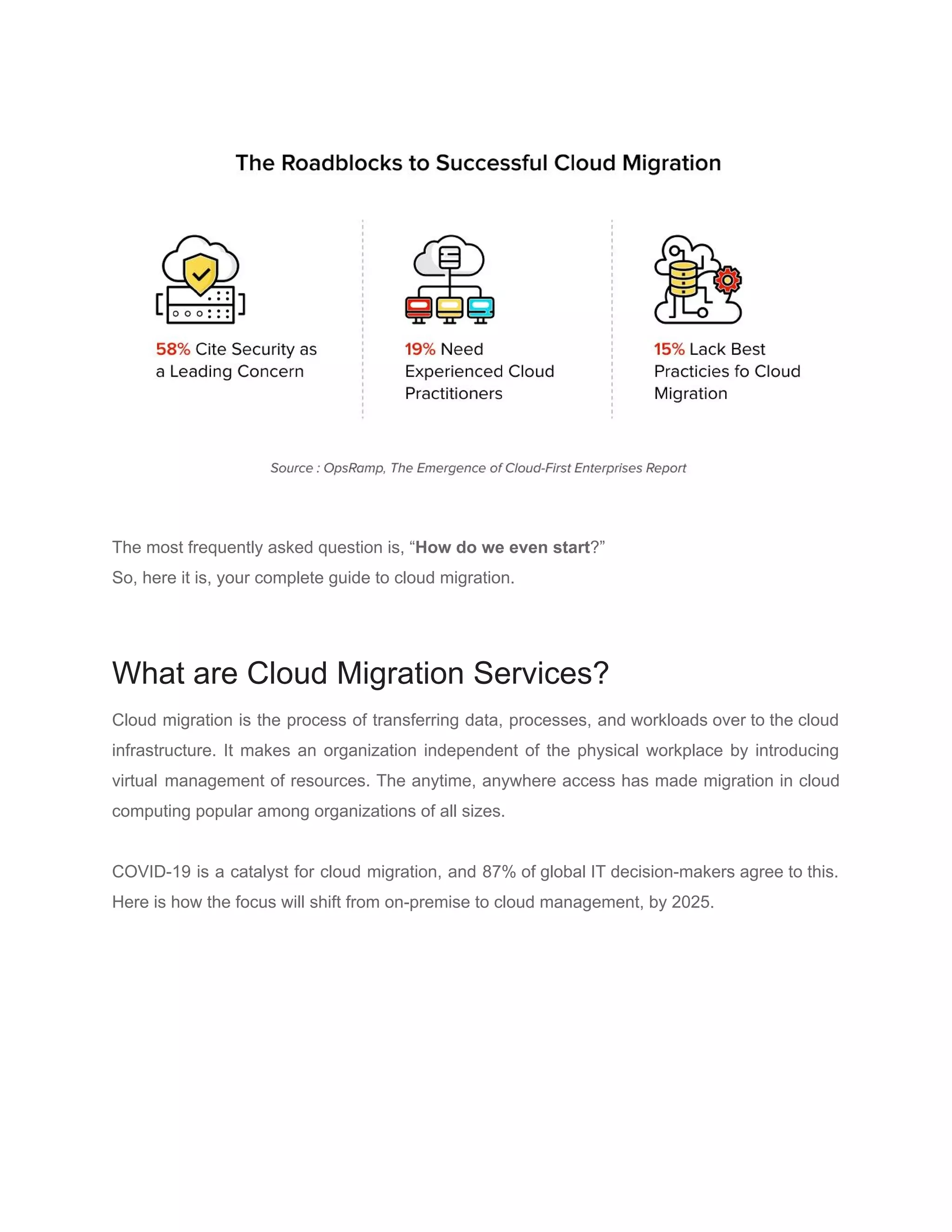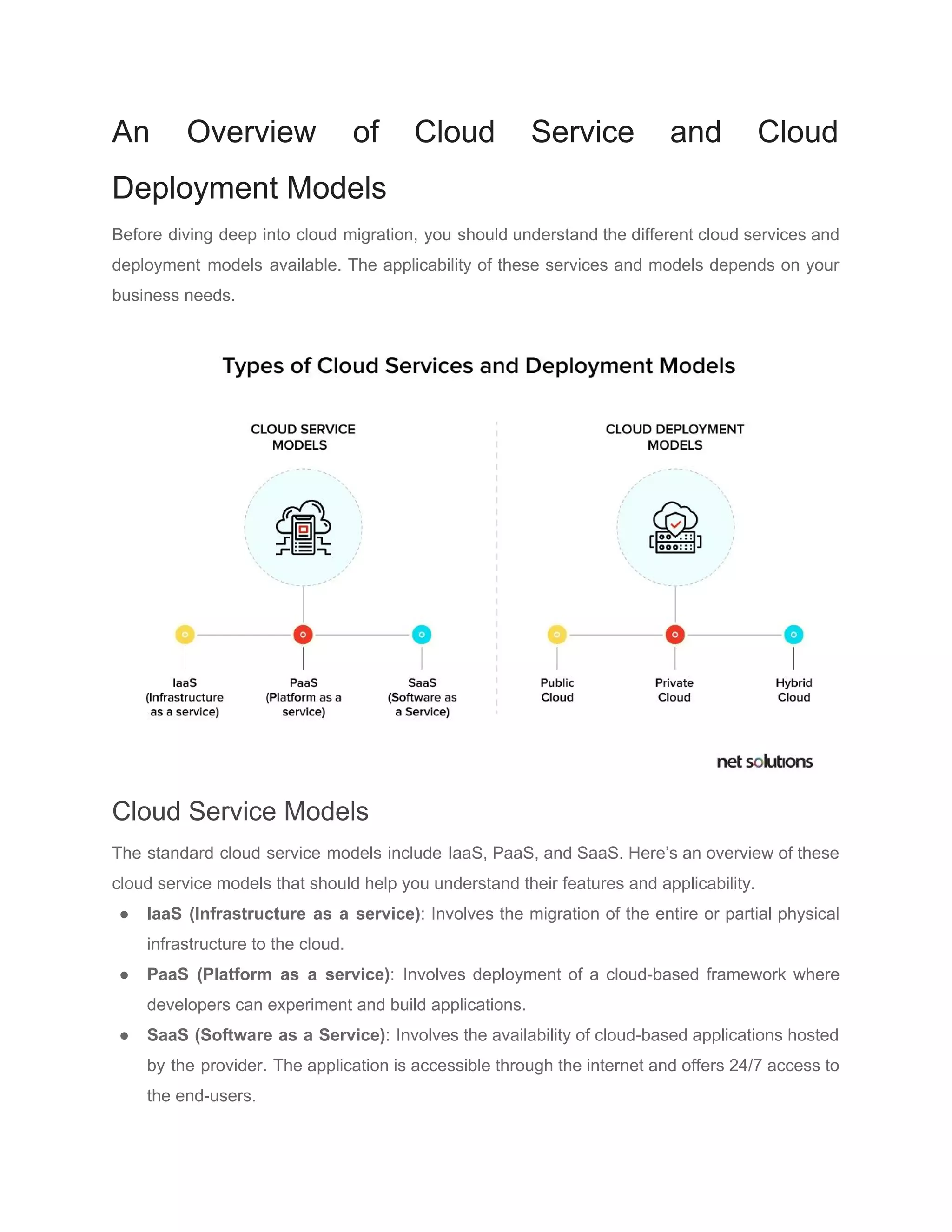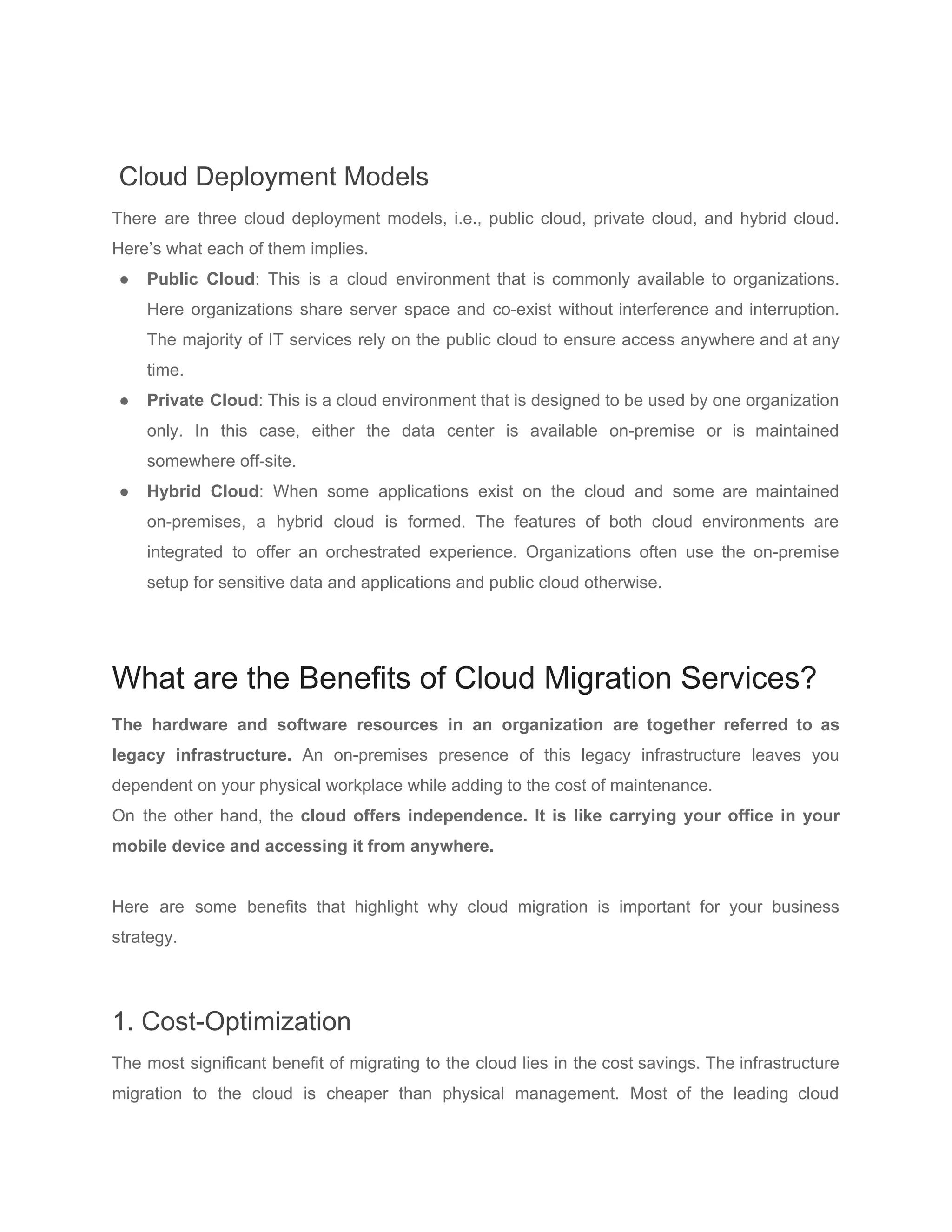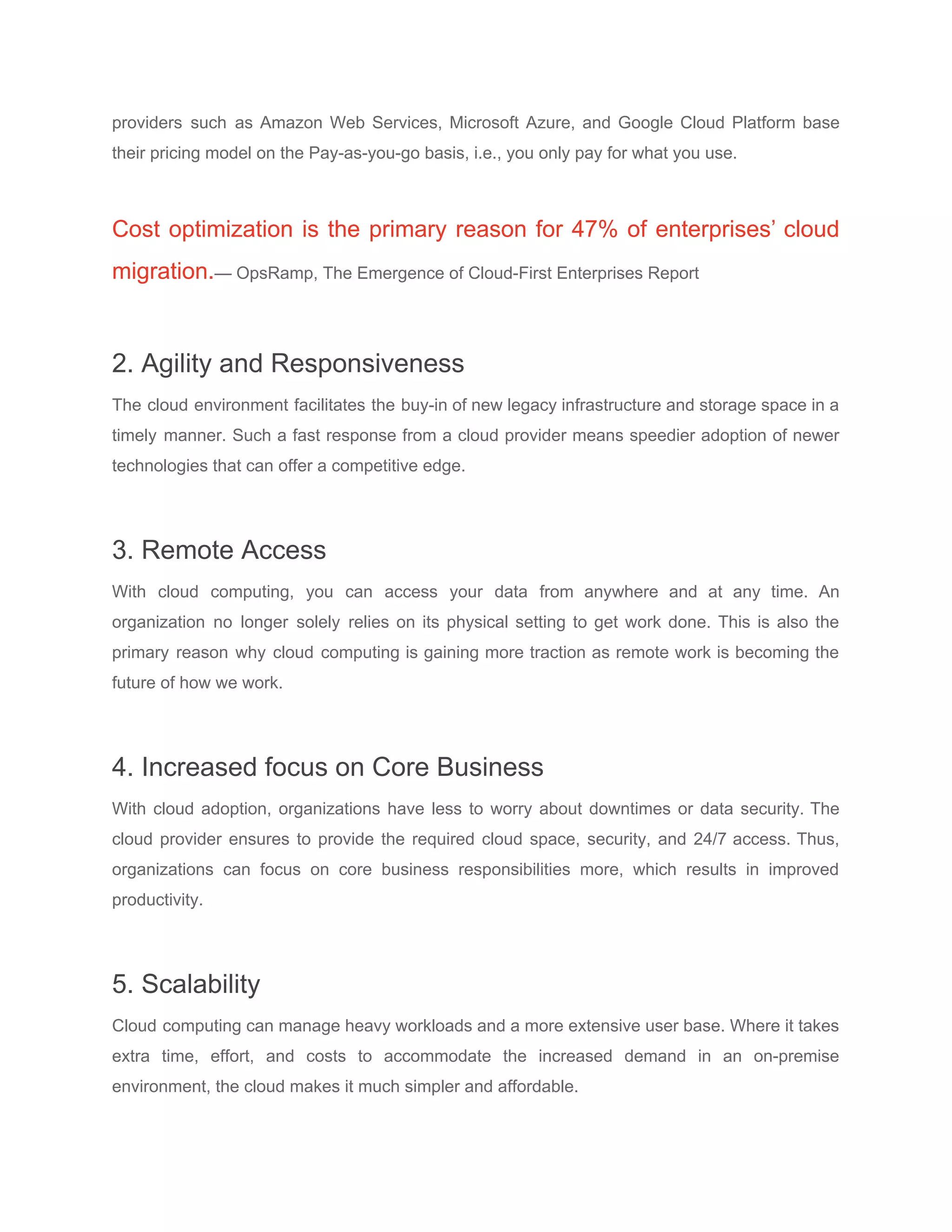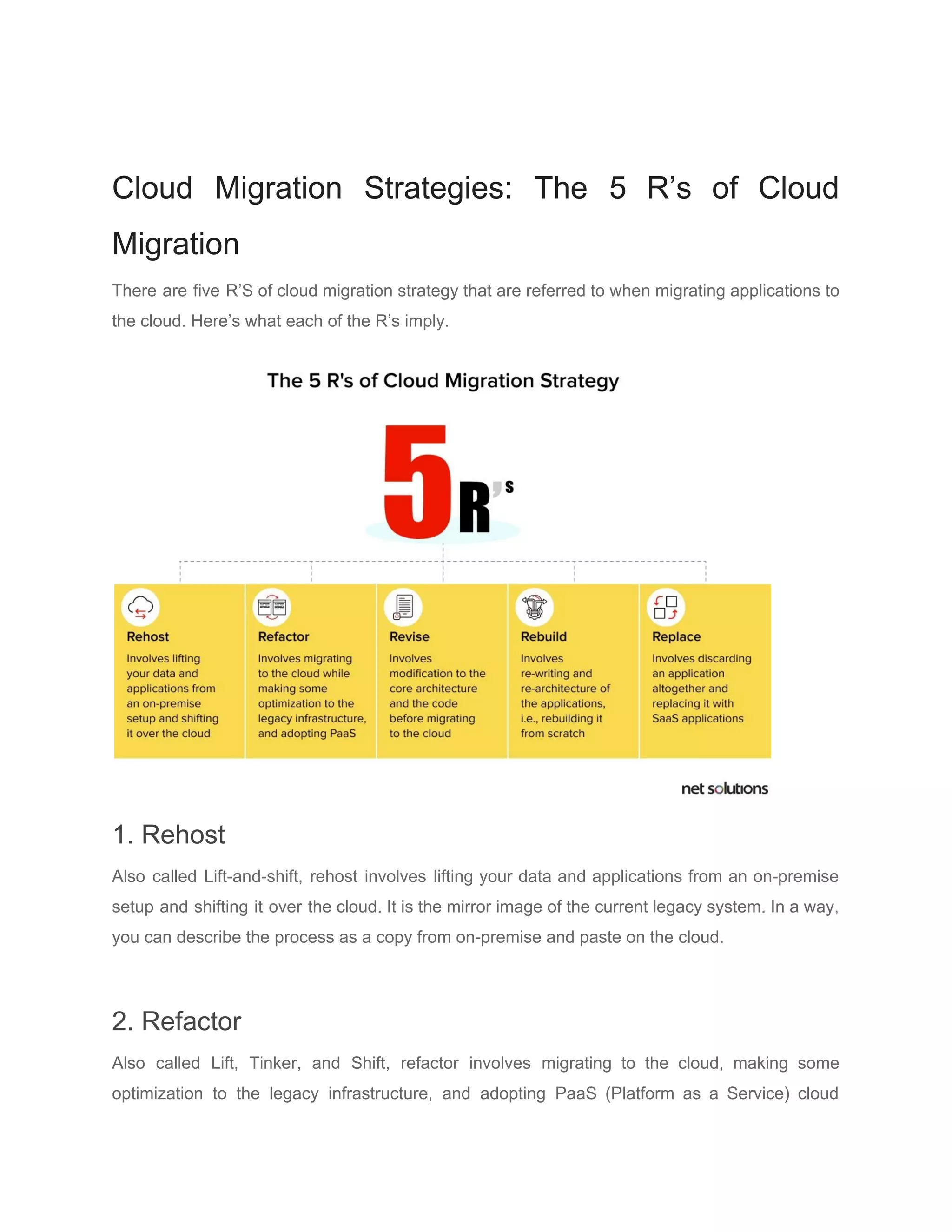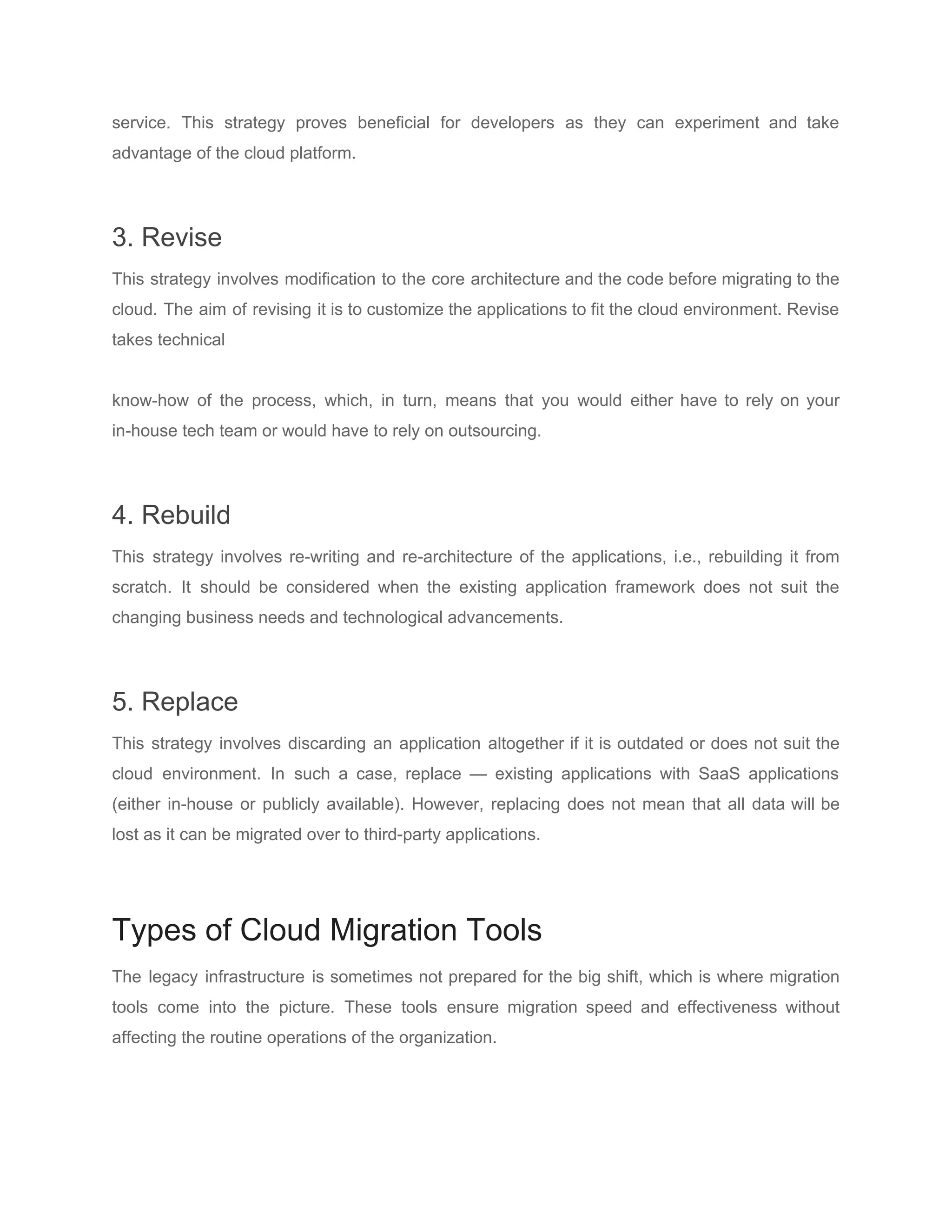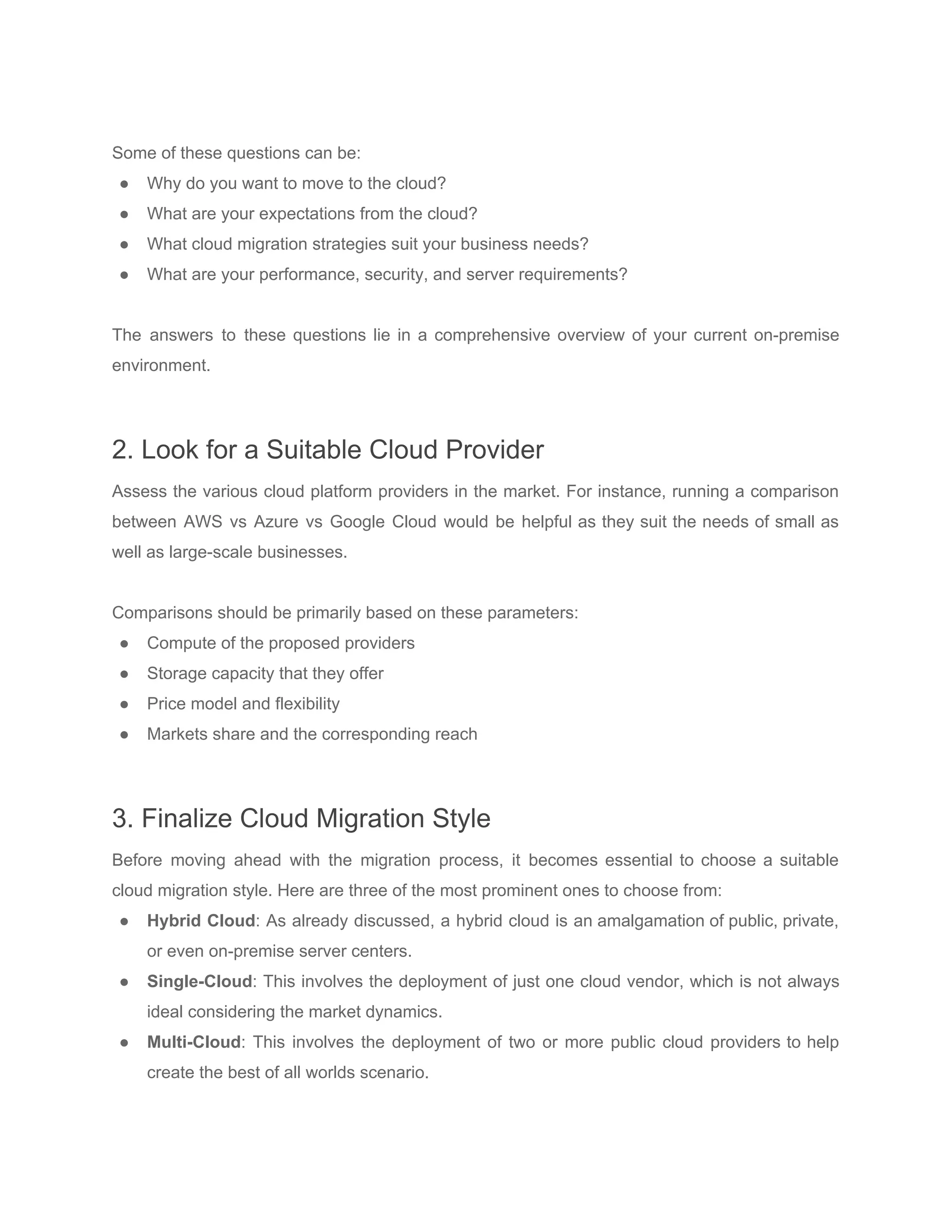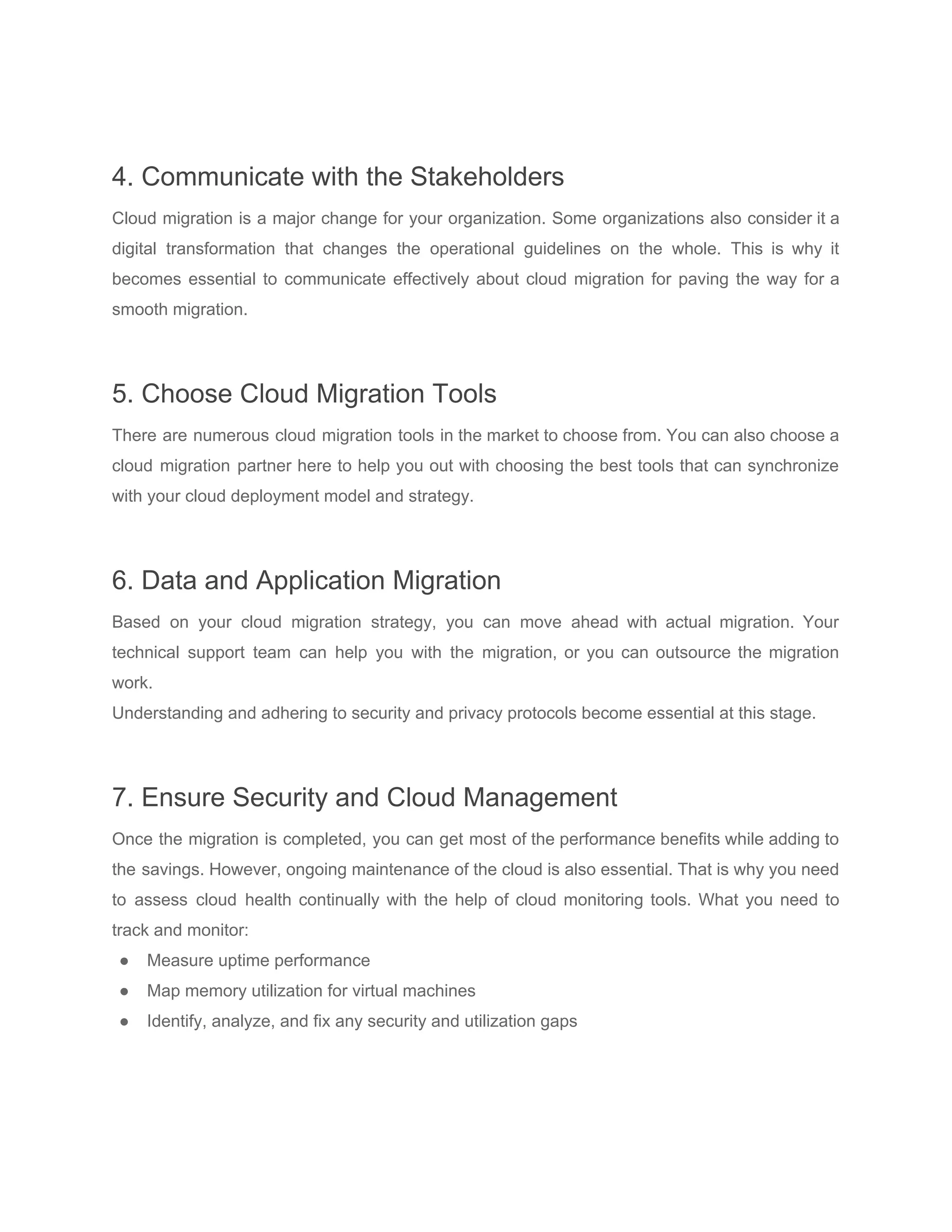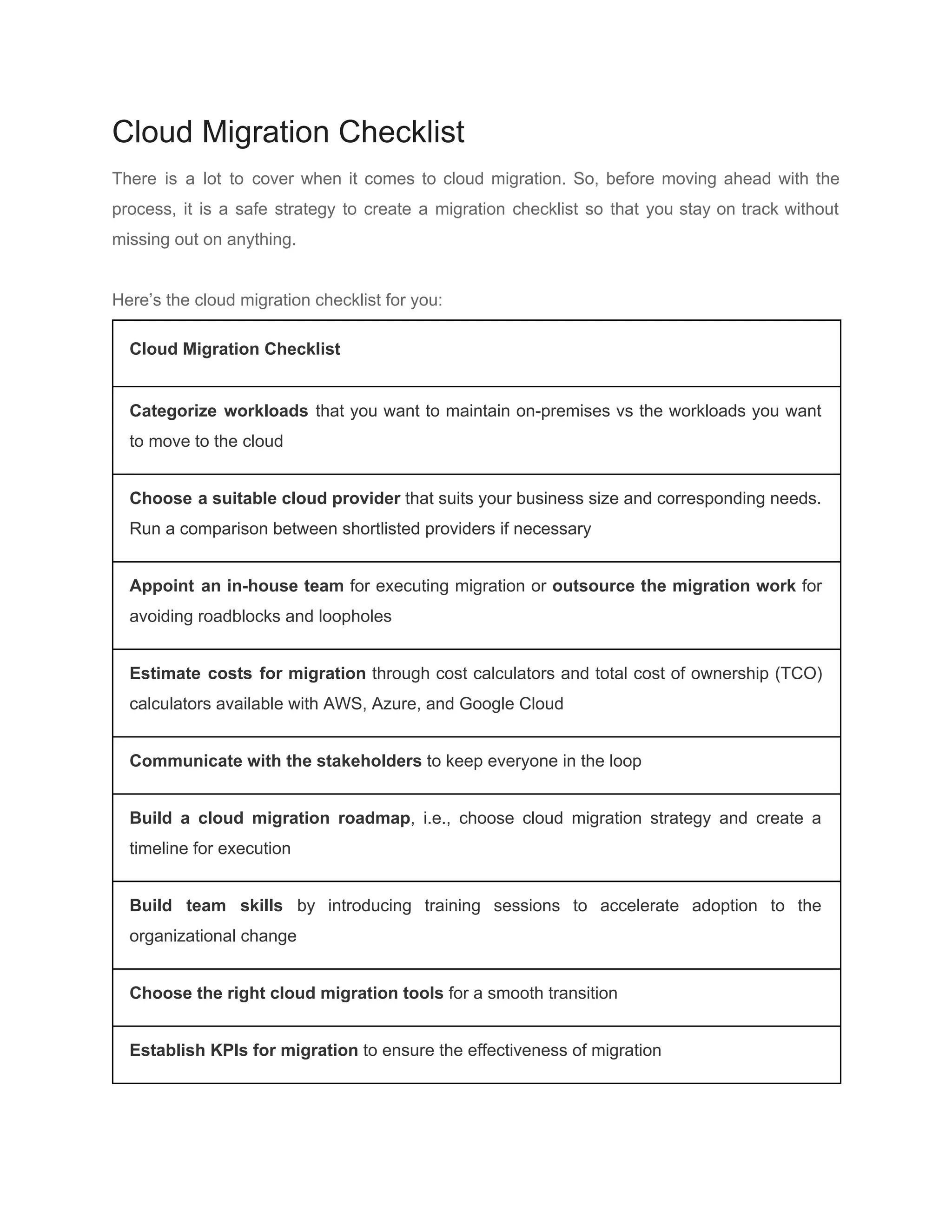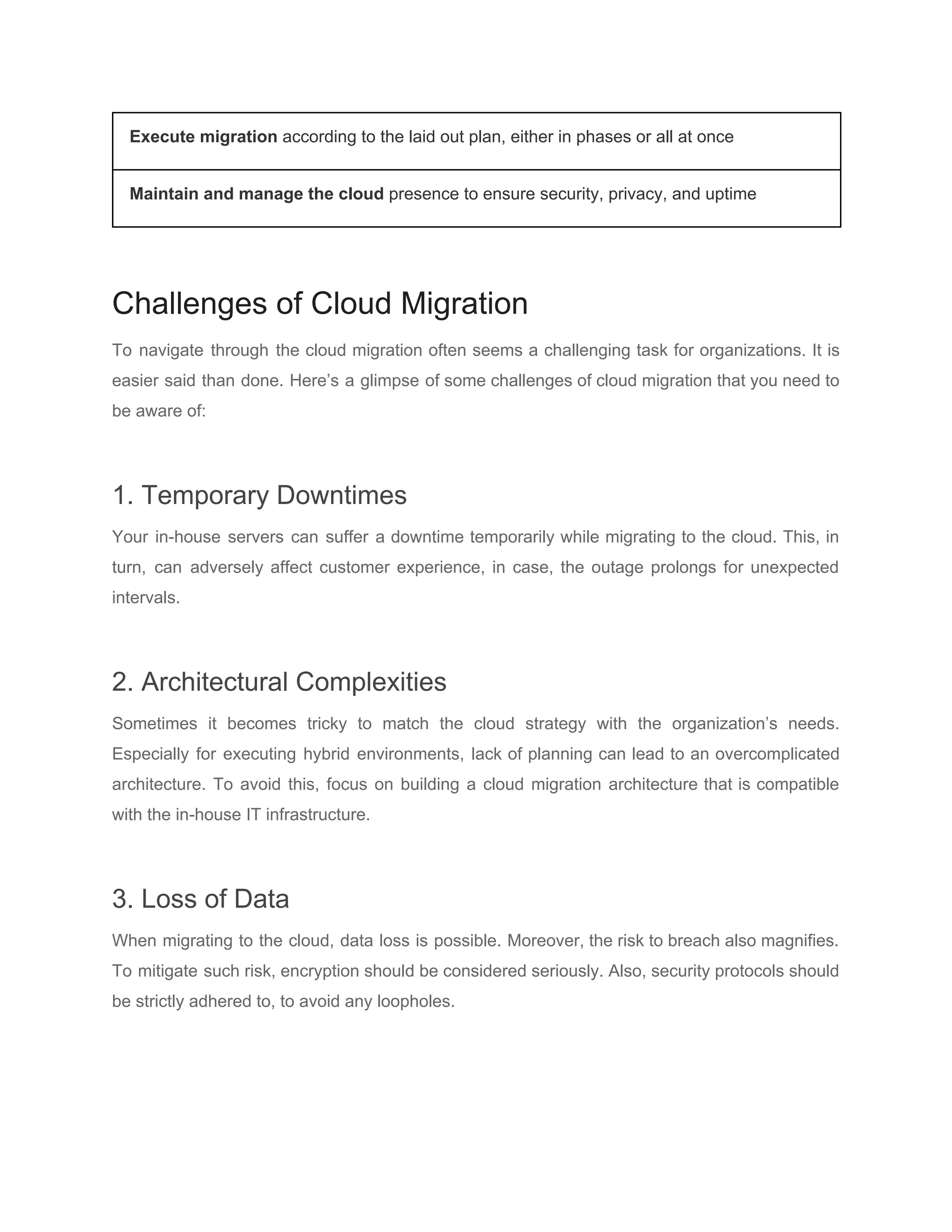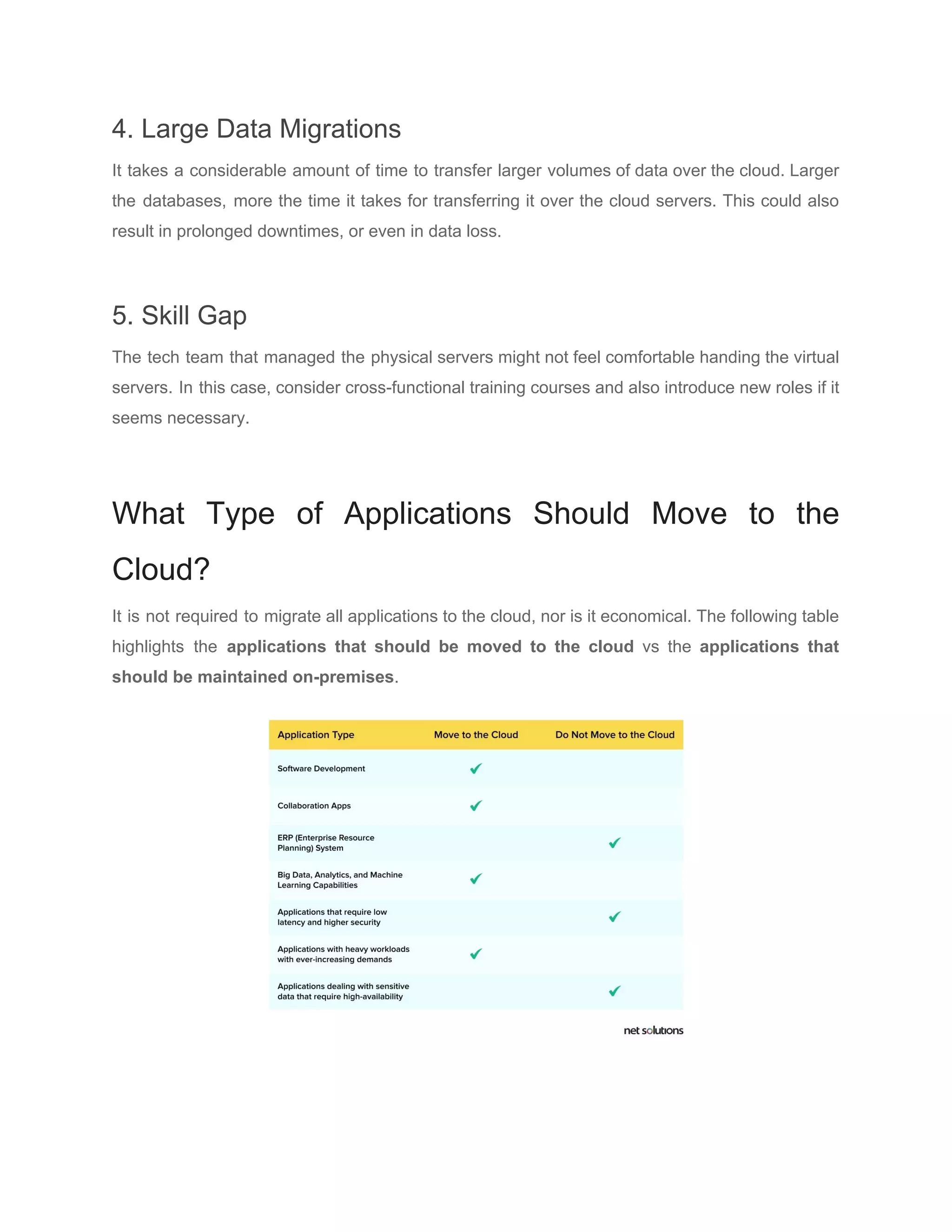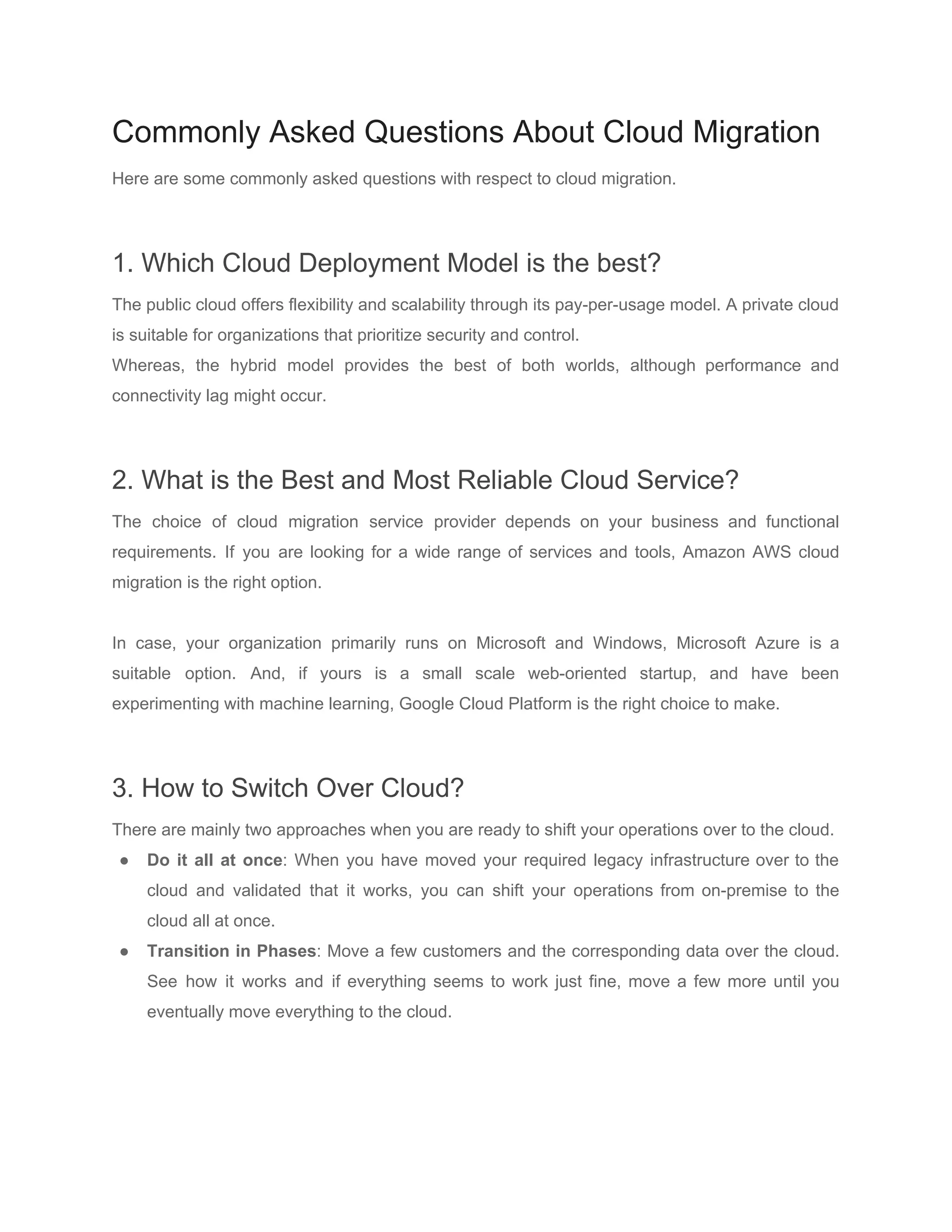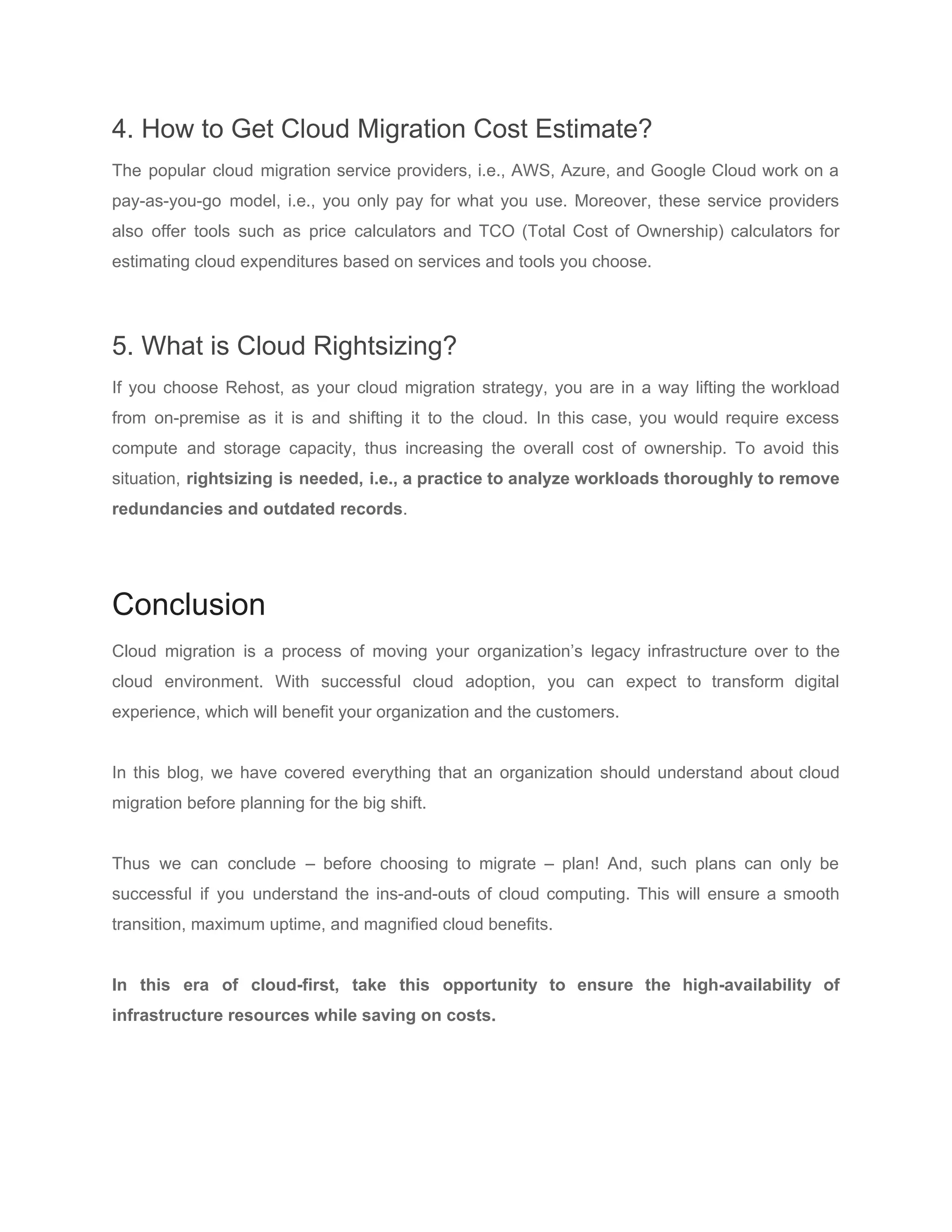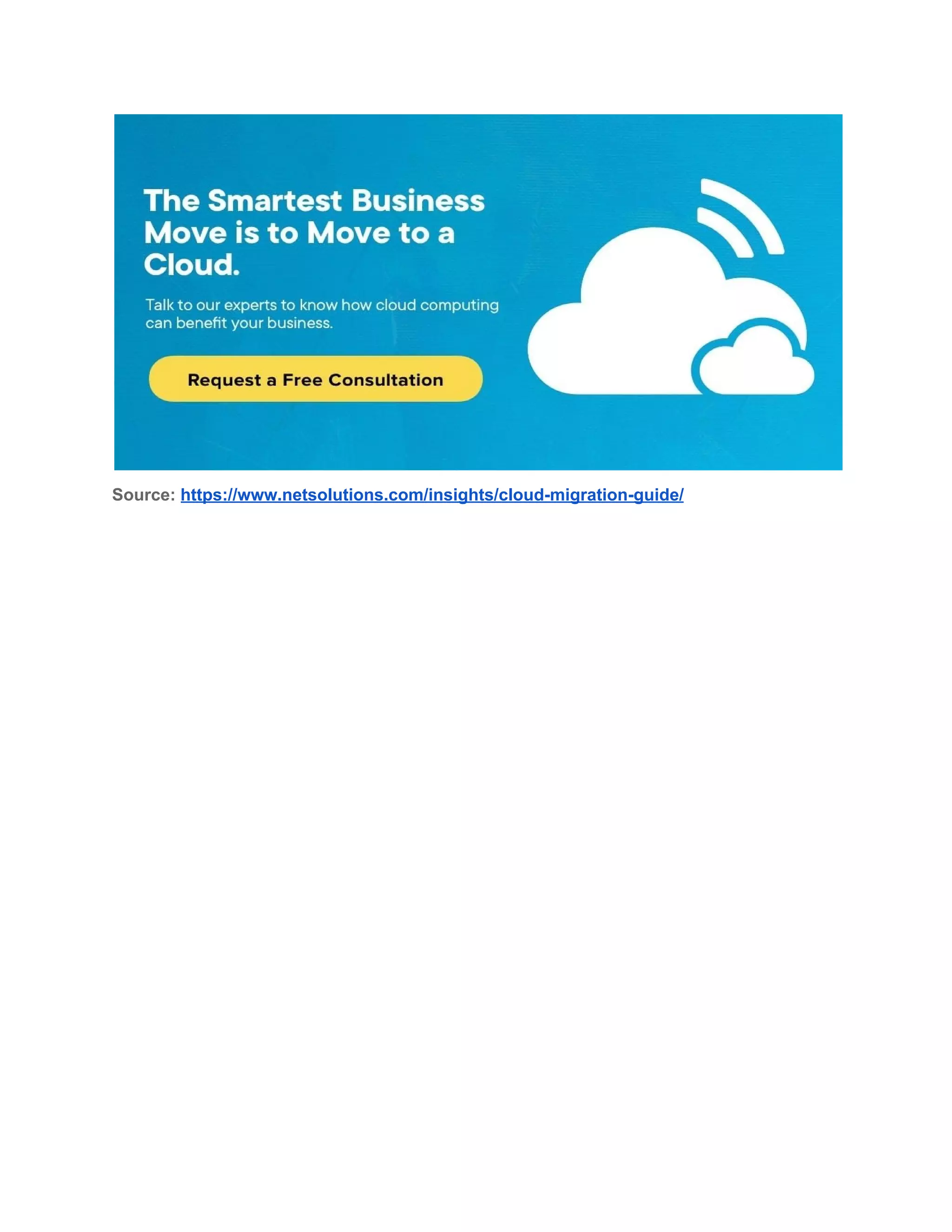Cloud migration involves moving an organization's infrastructure and applications to the cloud to ensure business continuity. The document provides an overview of cloud migration strategies, steps, challenges and considerations. It recommends prioritizing requirements, choosing a cloud provider, migration style and tools, communicating the changes, executing the migration carefully, and ongoing cloud management. Migrating to the cloud can optimize costs, improve agility and scalability, but requires planning to avoid downtime, data loss or architectural issues during the transition.
